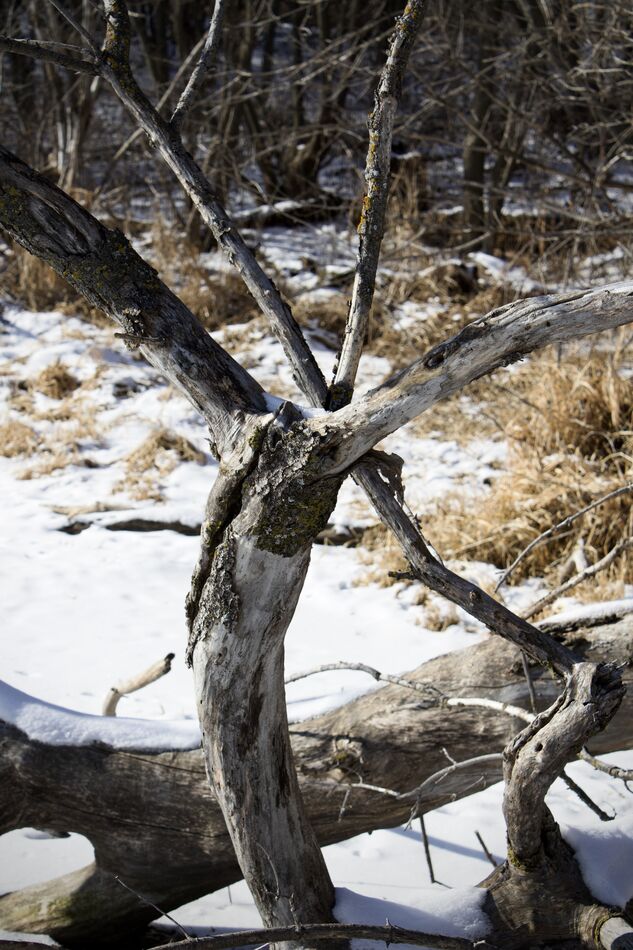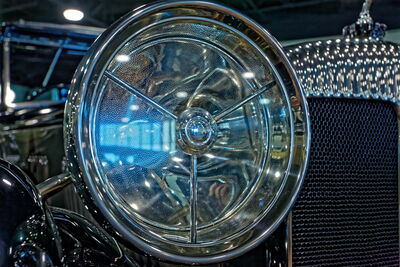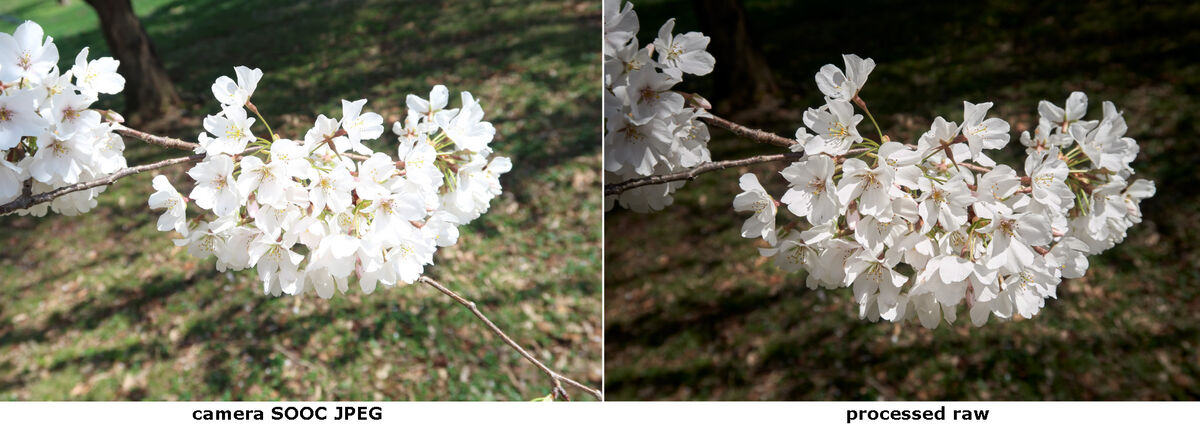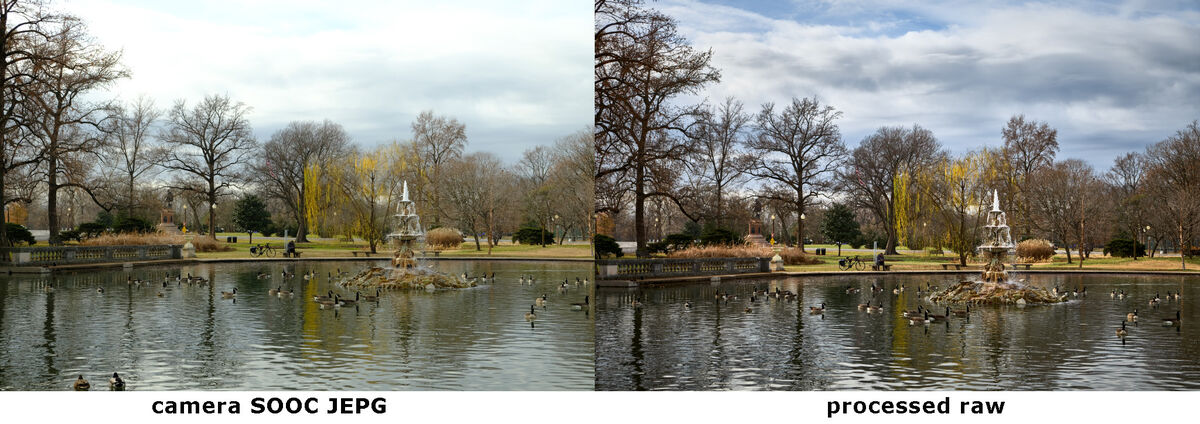What's so great about RAW?
Jan 24, 2024 20:14:40 #
NPSlover
Loc: Woodbury Minnesota
Admin, please move this post as is appropriate. I'm not really sure where it belongs.
I have read on numerous posts, both UHH and elsewhere, that I should shoot in RAW as opposed to JPEG. My Canon 7D Mark ii allows me to shoot in both simultaneously, so I decided to do just that and compare.
I have to say, I see little difference between the two. I'm not questioning the advice of those who have been kind enough to respond to previous posts... I'm just confused (and probably ignorant), so I'm looking to learn.
I've been told that RAW is meant to be post processed. I have yet to take the plunge to Lightroom, though I've read enough to be confident that is where I will ultimately go. I used the edit feature in Photos on my mac, edited the photo in RAW, then toggled back to JPEG. The edits stayed in place (I wasn't sure they would), but again, I saw minimal difference. Am I missing something here? I'll post the photo. It's nothing special. It was meant to be a test photo, so I realize the mediocrity of the image. I only post it so you see content. Is RAW better in some environments, but not a bright winter scene? I look forwad to your teachings.
I have read on numerous posts, both UHH and elsewhere, that I should shoot in RAW as opposed to JPEG. My Canon 7D Mark ii allows me to shoot in both simultaneously, so I decided to do just that and compare.
I have to say, I see little difference between the two. I'm not questioning the advice of those who have been kind enough to respond to previous posts... I'm just confused (and probably ignorant), so I'm looking to learn.
I've been told that RAW is meant to be post processed. I have yet to take the plunge to Lightroom, though I've read enough to be confident that is where I will ultimately go. I used the edit feature in Photos on my mac, edited the photo in RAW, then toggled back to JPEG. The edits stayed in place (I wasn't sure they would), but again, I saw minimal difference. Am I missing something here? I'll post the photo. It's nothing special. It was meant to be a test photo, so I realize the mediocrity of the image. I only post it so you see content. Is RAW better in some environments, but not a bright winter scene? I look forwad to your teachings.

Jan 24, 2024 20:33:22 #
NPSlover wrote:
Admin, please move this post as is appropriate. I... (show quote)
You will only see the difference between the two after you take the plunge into Lightroom if that’s your choice. You do not get the same result from the Photos editor as you would with an Adobe editor, DXO or Affinity.
Jan 24, 2024 20:35:33 #
Jan 24, 2024 20:37:45 #
Jan 24, 2024 22:04:21 #
Ysarex
Loc: St. Louis
NPSlover wrote:
I've been told that RAW is meant to be post processed.
Processing is required. It can be automated. That's what your camera does when it creates a JPEG for you. It processes the raw data. You can do that too. You can learn to do a better job than your camera does and you can use better tools than your camera has available.
NPSlover wrote:
I have yet to take the plunge to Lightroom, though I've read enough to be confident that is where I will ultimately go. I used the edit feature in Photos on my mac, edited the photo in RAW, then toggled back to JPEG. The edits stayed in place (I wasn't sure they would), but again, I saw minimal difference. Am I missing something here?
Absolutely.
NPSlover wrote:
I'll post the photo. It's nothing special. It was meant to be a test photo, so I realize the mediocrity of the image. I only post it so you see content. Is RAW better in some environments, but not a bright winter scene?
Raw allows you to create a final image with better overall technical IQ in all environments, but it's not better to shoot raw in all environments. Notably fast action photography where you need to rely on sustained high frame rates. Shooting raw and trying to save all that data at burst rates can slow all but the $$$$ cameras. Raw is likewise a problem if the photos need to be used immediately (eg. journalism).
NPSlover wrote:
I look forwad to your teachings.
In your test shot you exposed the JPEG and the raw file the same. Right there is a potential difference of some consequence. Look at the illustration below of a flowering fruit tree (Canon G7). The camera JPEG is on the left. It's nuked to hell -- wastebasket fodder. But the raw file highlights were not blown out. I set an optimal exposure for the sensor and exposed the sensor to capacity. It's camera make/model specific but for most cameras to get a good JPEG you have to set an exposure than under utilizes the sensor. About how much do you think in the flower photo below? One stop? That's 1/2 the capacity of the sensor.
Look at the second illustration of the pond in the park (Fuji X-T2). Shooting & processing raw lets me take photos you can't take at all shooting JPEG. Same situation as the flowering tree in terms of exposure. The camera JPEG is nuked when the raw file was exposed to fully utilize the sensor. To get a good JPEG with that camera I would have had to reduce exposure -- that reduces SNR and that reduces IQ.
I did something else that you can't do at all shooting JPEG. It's mostly overcast and the foreground is in overcast light but there's blue sky visible. That's two different white balances and so I set two different white balances in separate parts of the photo. You won't find that in your camera's menu.
And that's barely just the beginning.
Jan 24, 2024 22:19:30 #
NPSlover wrote:
Admin, please move this post as is appropriate. I... (show quote)
Loaded with character 🎯
Jan 25, 2024 01:19:42 #
Bret P
Loc: California
Got great lighting and your jpeg looks really good? You're fine.
Need more dyamic range or plan to edit exposure? Go raw, but not with Apple Photos.
Need more dyamic range or plan to edit exposure? Go raw, but not with Apple Photos.
Jan 25, 2024 01:27:47 #
Bret P
Loc: California
Ysarex wrote:
In your test shot you exposed the JPEG and the raw file the same ... [/b]
Great demonstraion



Jan 25, 2024 06:09:02 #
If you shoot JPEG and refrain from manipulating the image you should be OK if the output of the camera is satisfactory to you. RAW data is called the "digital negative" because it has to be processed and not all editors process the RAW data.
JPEG files have 8 bits of compressed information and the files tend to lose part of their original information. RAW data has 12 or 14 bits of information in addition to millions of colors but neither you nor anybody else can see them and that includes the monitor. It is a fact to edit RAW data without losing information. Dynamic range is better and manipulations can be done freely knowing the data will not be harmed.
If you find that your JPEG files are satisfactory to you no reason to go RAW. You are saving time and if you decide to manipulate the file, not recommended, save it as Tiff. Warning, Tiff and RAW data are large and require lots of memory. Just remember, keep manipulation during editing of a JPEG file to the absolute minimum to keep the quality intact.
JPEG files have 8 bits of compressed information and the files tend to lose part of their original information. RAW data has 12 or 14 bits of information in addition to millions of colors but neither you nor anybody else can see them and that includes the monitor. It is a fact to edit RAW data without losing information. Dynamic range is better and manipulations can be done freely knowing the data will not be harmed.
If you find that your JPEG files are satisfactory to you no reason to go RAW. You are saving time and if you decide to manipulate the file, not recommended, save it as Tiff. Warning, Tiff and RAW data are large and require lots of memory. Just remember, keep manipulation during editing of a JPEG file to the absolute minimum to keep the quality intact.
Jan 25, 2024 07:14:16 #
Jan 25, 2024 07:20:46 #
David Martin
Loc: Cary, NC
NPSlover wrote:
What's so great about RAW?
RAW file contains all of the data your camera collected.
The straight-from-camera JPEG is a file derived from the RAW file, that your camera created, using settings for white balance, color saturation, sharpening and overall exposure, that your camera thinks are appropriate, and then compresses the image, discarding data that your camera thinks is no longer needed.
The RAW file provides you with all of the data, and permits you to adjust the exposure, saturation, sharpening, etc. that you prefer. Often using different settings in different parts of the image.
As Ysarex has demonstrated, you can recover highlights, brighten dark areas, adjust white balance. etc. to reveal details in the image that the JPEG has lost, but that your eye saw when you took the photo, because your eye has greater dynamic range than your camera, and because your eye automatically adjusts when looking at bright and dark areas.
Many times the JPEG will be satisfactory. The RAW file requires work on your part, but affords the opportunity to do better. And often "rescue" a decent photo from a throw-away JPEG that your camera would have created.
Jan 25, 2024 10:13:35 #
NPSlover
Loc: Woodbury Minnesota
The “discarding data” piece hits home with me. I want the ability to manipulate my photos not to create something that wasn’t there, but rather to bring forth details that my eye saw that the camera deemed unimportant. From what I’m reading, THAT is the value of RAW.
David Martin wrote:
RAW file contains all of the data your camera coll... (show quote)
Jan 25, 2024 10:18:57 #
NPSlover
Loc: Woodbury Minnesota
Ysarex wrote:
In your test shot you exposed the JPEG and the raw... (show quote)
Thanks for taking the time to articulate so clearly. The images help me immensely.
The ability to set different white balances to different portions of an image seems highly beneficial. One might say necessary in order to maximize a photo’s potential. I don’t want to alter the reality of the scene I shot, but I do want to represent it as the eye sees it. I assume Lightroom has that capability?
Jan 25, 2024 10:28:00 #
NPSlover
Loc: Woodbury Minnesota
Bret P wrote:
Got great lighting and your jpeg looks really good? You're fine.
Need more dyamic range or plan to edit exposure? Go raw, but not with Apple Photos.
Need more dyamic range or plan to edit exposure? Go raw, but not with Apple Photos.
Thanks. I appreciate the “to the heart of it” manner.
Jan 25, 2024 10:28:10 #
Ysarex
Loc: St. Louis
NPSlover wrote:
Thanks for taking the time to articulate so clearly. The images help me immensely.
The ability to set different white balances to different portions of an image seems highly beneficial. One might say necessary in order to maximize a photo’s potential. I don’t want to alter the reality of the scene I shot, but I do want to represent it as the eye sees it. I assume Lightroom has that capability?
The ability to set different white balances to different portions of an image seems highly beneficial. One might say necessary in order to maximize a photo’s potential. I don’t want to alter the reality of the scene I shot, but I do want to represent it as the eye sees it. I assume Lightroom has that capability?
Yes, Lightroom is one of the best options in a raw file processor. You do have other options with some variation in features, performance and cost to choose from. Competitive with Lightroom are:
Capture One
DXO Photo lab
On1 Photo raw
etc.
free trials are typically available.
There are some open source options notably DarkTable.
And let's not forget free for your Canon camera DPP from Canon. You can download it right now and start experimenting no cost.
If you want to reply, then register here. Registration is free and your account is created instantly, so you can post right away.






